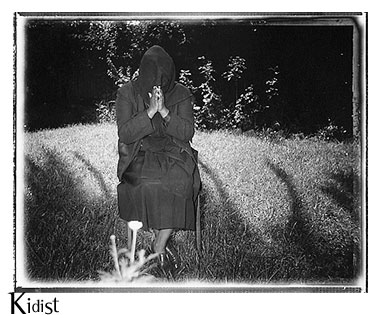


I began this project wanting to dispel the notion that all people with AIDS in Africa are sick and dying. Naively, I set out to show people living with this disease–at work, at home, with their families–and to photograph them the same way I might photograph my own family going about daily life.
But this plan, in part, failed. Many Ethiopians living with HIV that I met had not told their families and were reluctant to speak with me. Many simply refused to be photographed, saying that they were afraid their employers might fire them, their landlords might evict them from their homes, or their unforgiving family members might alienate them.
Out of necessity I developed a different documentary approach. Instead of making photographs of family life, I began to make portraits at counseling centers, omitting the subjects' real names, and leaving them unidentifiable. Some participants worried that I would somehow manipulate the images to show their faces. In response, I used a Polaroid photographic process that was slow and deliberate. I often lugged a tripod and other cumbersome equipment with me. I used positive-negative film that develops both a print and a negative a minute after exposure. The subjects and I would look at the photographs together and decide whether their faces were truly hidden. If they were, I could use the image in exhibits and for publication. If they weren’t, we would dispose of the negative on the spot. This collaborative process allowed me to create images that express what the participants want others to see about their lives.
-- Eric Gottesman